I've talked about why despite their slow rap, snails are actually awesome -- but if there's a creature more seemingly boring than a snail, it's the sponge. Evolutionarily, sponges are among the oldest, most basal multi-cellular animals, and as such, they're very simple, lacking organs and the ability to move -- but despite this, they've come up with some clever body engineering.
Reason #1: Spicules.
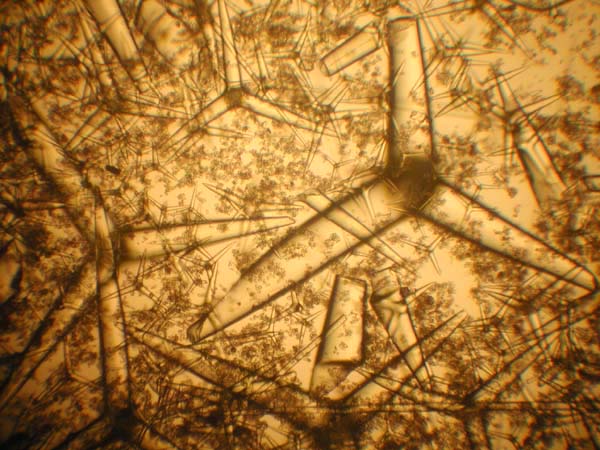 Most everybody loves the squishy goodness of bath sponges, but few people would describe them as awesome — maybe soft or exfoliating. However, in reality, when it comes to the majority of living sponges, you’d only want your worst enemies bathing with them. They’re exfoliating, all right: 95% of ocean sponges contain a skeleton of randomly-arranged, needle-like spicules made of glass or calcium carbonate, all ready to shred the flesh of would-be predators (like echinoderms). In humans, this microscopic defense network causes irritating rashes, although the Caribbean fire sponge causes severe dermatitis. A few encrusting sponges produce toxins; some leverage their poisons to eat away at coral reefs and mollusk shells. Some sponges use a single giant spicule as an anchor.
Most everybody loves the squishy goodness of bath sponges, but few people would describe them as awesome — maybe soft or exfoliating. However, in reality, when it comes to the majority of living sponges, you’d only want your worst enemies bathing with them. They’re exfoliating, all right: 95% of ocean sponges contain a skeleton of randomly-arranged, needle-like spicules made of glass or calcium carbonate, all ready to shred the flesh of would-be predators (like echinoderms). In humans, this microscopic defense network causes irritating rashes, although the Caribbean fire sponge causes severe dermatitis. A few encrusting sponges produce toxins; some leverage their poisons to eat away at coral reefs and mollusk shells. Some sponges use a single giant spicule as an anchor.
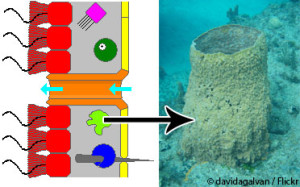 Reason #2: Regeneration.
Reason #2: Regeneration.
On the other hand, don’t bother taking revenge on a sponge by shredding it. Thanks to archeocytes that can transform into any cell the sponge needs, the regenerative abilities of sponges are famous. You can force a sponge through a fine mesh screen, and eventually, each microscopic blob of cells leftover will regrow into a sponge genetically identical to the original. Don’t feel too bad for sponges subjected to such treatment: this simple creature lacks a nervous system – and true tissues period, for that matter. (Not to say that sponges should be harvested at will, as this can hurt their populations; fortunately, most sponges today are synthetics.) Despite this, sponge cells can recognize each other; if you mash up two sponges as described and try to mix them together, the cells will separate out into two groups corresponding to which ones came from the donor sponges.
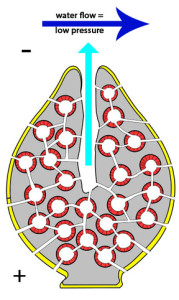 Reason #3: Venturi effect.
Reason #3: Venturi effect.
Maybe you don’t remember the Venturi effect from high school physics, but sponges do. Actually, the bacteria-eating filter-feeders have taken advantage of a couple physics principles. Since sponges lack circulatory and digestive systems, they had to come up with others ways to make sure vital oxygen and nutrients could reach every cell. Keep in mind that in the sea, simple diffusion only works over distances of half a millimeter. Yet, sponges can grow much, much larger than that (the giant barrel sponge grows six feet wide and lives 2,000 years). They achieve this by increasing their surface area using their characteristic folds and pores; in leuconoid sponges, as many as 10,000 pores can exist in every cubic millimeter. Still, this technique only works if water is flowing past the cells, but sponges can’t pump water like, for example, bivalves. Rather, the water flowing over the top of the sponge creates low pressure; in turn, the water entering the sponge at the bottom moves from high pressure (at the bottom) to low pressure (at the top), providing sufficient circulation for the sponge without any energy expenditure.
All images from Wikimedia.

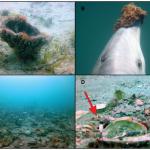
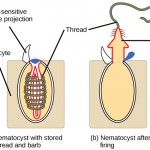
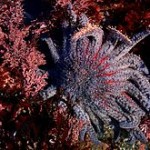
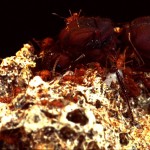

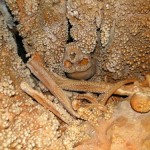
Pingback: New refrigerator cools food without electricity
Pingback: New refrigerator cools food without electricity | Daily Green World